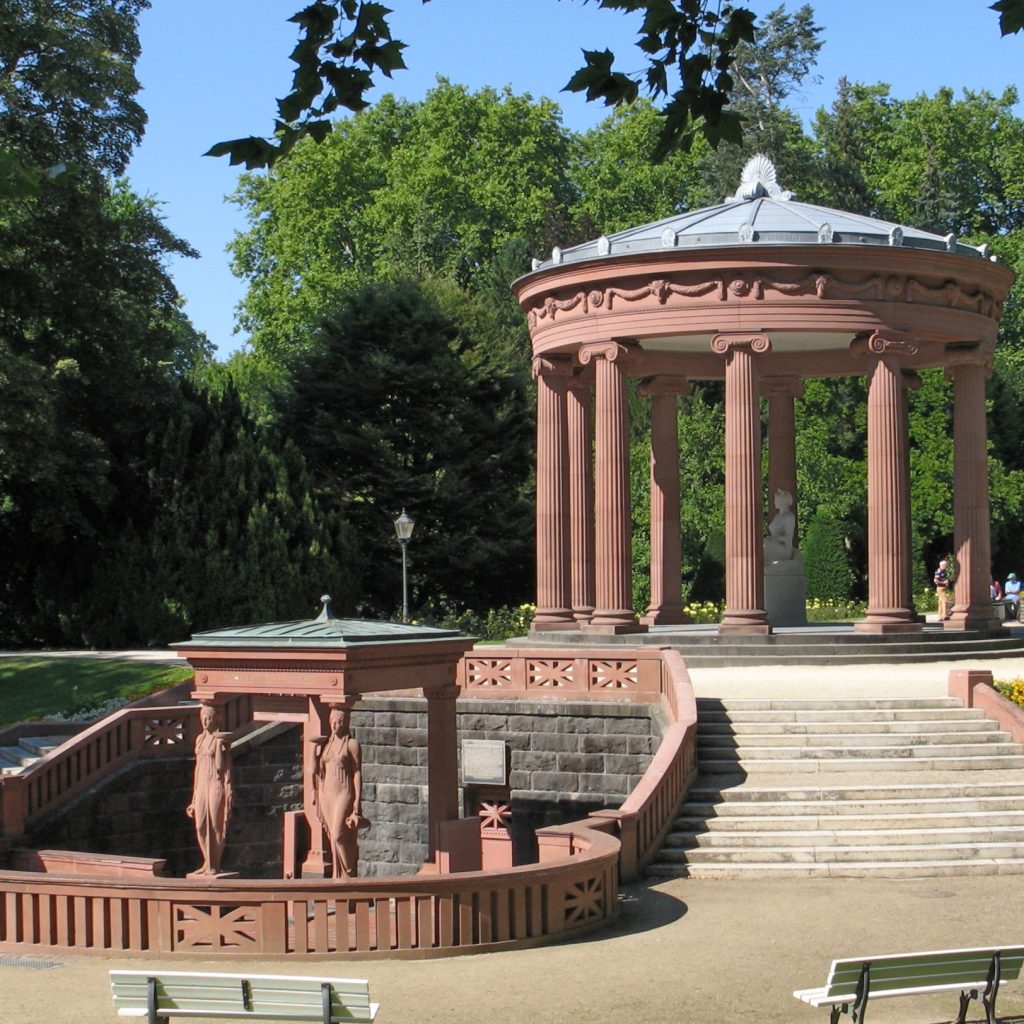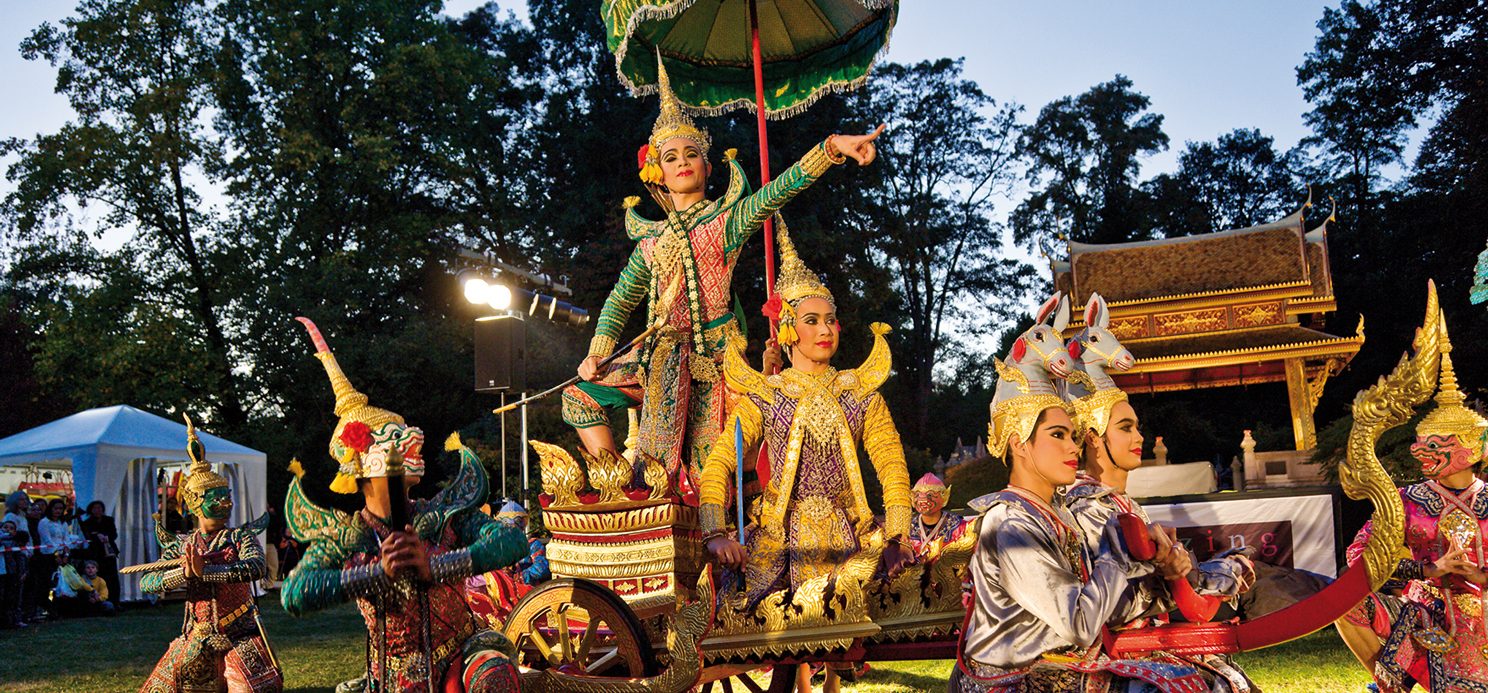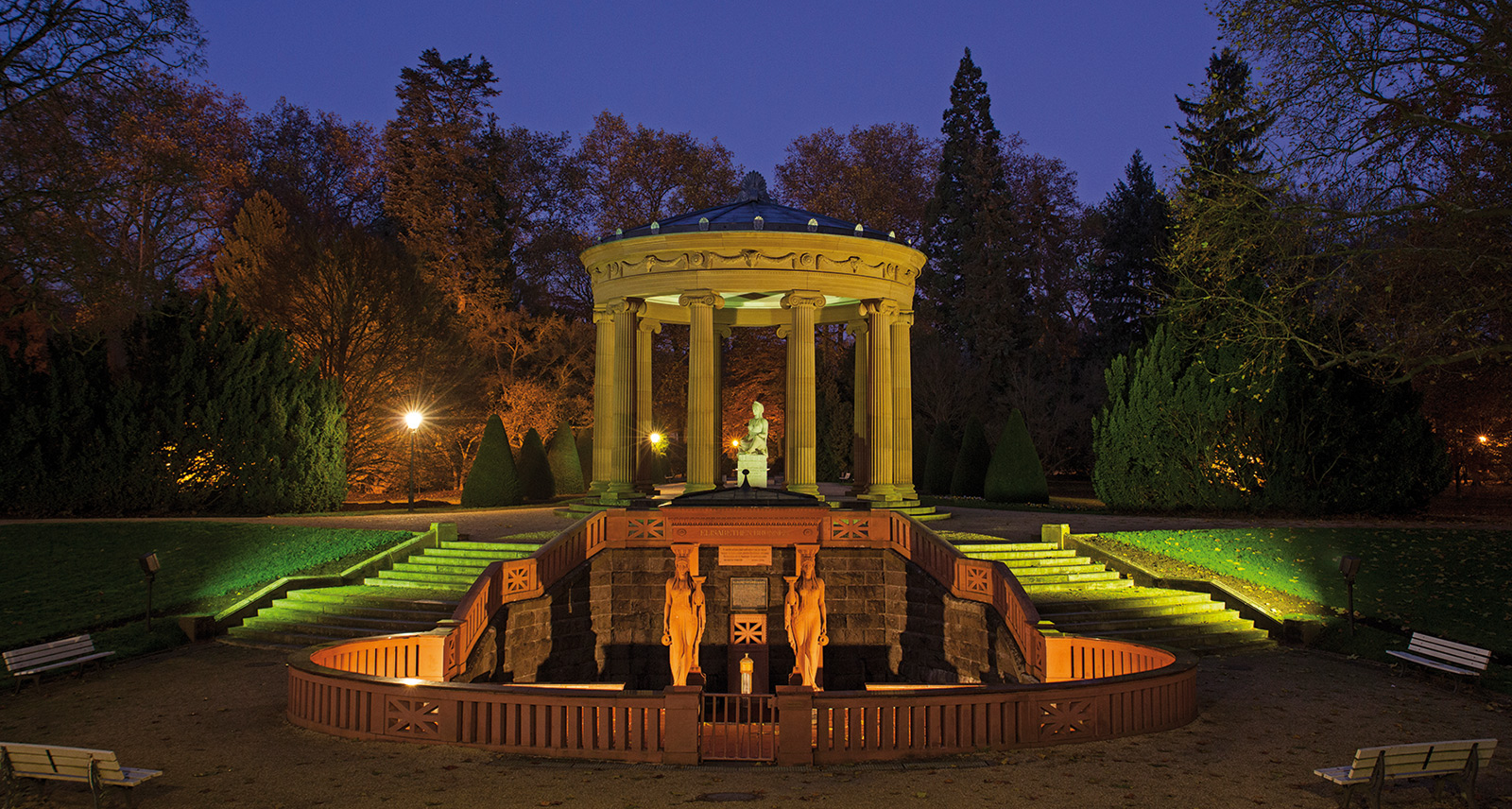Once enjoyed by the Romans, Bad Homburg’s famous mineral springs were used to produce salt in early times, but soon they were devoted to the health of the town’s prestigious visitors and residents: European nobility, literary figures, politicians, high-rank militars…. At the end of the 19th century Bad Homburg was a popular resort for this cosmopolitan high society, a magnificent spa town full of parklands and enterntainment facilities.
These golden years came to and end with the outbreak of the First World War, but Bad Homburg has, nevertheless, remained a prosperous town. Todays is an important bussines center and a celebrated spa resort, with a rich cultural and arts scene.
Bad Homburg is candidated for the proposed World Heritage nomination to UNESCO in the Great Spas of Europe project.

Bad Homburg v. d. Höhe
Historical Background
Bad Homburg’s history began in 1170 with the construction of a castle set on a ridge at the foot of the low mountains of the Taunus range. The village that sprang up beneath the castle received its town charter in 1330 and began to prosper when the Landgraviate of Hessen-Homburg was established, in 1622.
In 1680 Landgrave Friedrich II, the “Prince of Homburg” , started transforming the old castle into a baroque-style palace, and also ordered the establishment of the new town, while promoting and overseeing increased trade and commerce. His successors followed his example, securing Bad Homburg’s place in German cultural and intellectual history (Hölderlin, Goethe, Klopstock, among others).
The discovery of the first mineral spring, in 1809, marked the beginnings of Bad Homburg as a spa town. Soon, two events triggered its development. In 1834, the Elisabethenquelle (“Elisabeth’s spring”) is rediscovered and praised by the renowned German chemist, Justus von Liebig for their excellence and, in 1841,Francois and Louis Blanc built the first spa facilities and started operating the Casino.
Bad Homburg continued to grow over the following years, along with its popularity, specially with the creation of the spa park, designed by Peter Joseph Lenné, the connection to the European railway network, and the many social and cultural events held here.
At the end of the 19th century the German emperor, Kaiser Wilhelm II, established his summer residence in the former Landgrave’s palace. Bad Homburg definitely became a fashionable spa resort for the European aristocrats, who came here to take the waters, stroll in the parklands and the nearby Taunus riverbanks, swing rackets on the continent’s first tennis courts (1876) or clubs on Germany’s very first golf course (1889).
The golden years of the royal spa town – known as the “aristocrat amongst Europe’s spa resorts” – came to an end with the outbreak of the First World War, but Bad Homburg has nevertheless remained a celebrated spa resort.

The then Prince of Wales, who was later to become King Edward VII of England, visited Bad Homburg a total of 32 times. On a side note, it was he who popularised the famous “Homburg hat”.
The waters
Springs & Spas
Bad Homburg is synonymous with 200 years of healing and healthcare tradition, famous its mineral springs and the medicinal clay treatments, both rich in healing qualities. It many treatments can be enjoyed in several spa facilities devoted to medical and wellness treatments.
The historical Kaiser-Wilhelms-Bad is nowadays home to the Kur-Royal Day Spa, a haven of wellbeing that combines health promotion and regeneration.
The Taunus Therme thermal baths are a further oasis for alleviating pain and recharging the batteries. Supplied by the Viktoria Louise Spring, these thermal baths in their oriental-style surroundings offer comprehensive health and spa programmes with indoor and outdoor sauna landscapes, sunbeds, sports and fitness.
Bad Homburg is also home to an acute care clinic and four follow-up rehabilitation and preventive care clinics, all of which are equipped with the very latest medical equipment and services.
Bad Homburg’s Mineral Springs
- Elisabethenbrunnen:Sodium-chloride acidulated waters used in drinking treatments for gastrointestinal disorders.
- Landgrafen- und Auguste-Victoria-Brunnen:Sodium-chloride acidulated waters used in drinking treatments for liver and gall bladder disorders
- Louisenbrunnen: Sodium-calcium-chloride-hydrogen-carbonate waters used in drinking treatments for cardiovascular disorders
- Stahlbrunnen: Sodium-chloride acidulated waters used in drinking treatments for anaemia and blood pressure disorders.
- Kaiserbrunnen: Sodium-chloride acidulated waters used in drinking and bathing treatments for cardiovascular disorders.
- Ludwigsbrunnen: Sodium-chloride acidulated waters used in drinking and bathing treatments for upper respiratory tract disorders.
- Solesprudel: Carbonated salt waters used in bathing treatments for psoriasis and neurodermatitis.
- Viktoria-Louise-Brunnen: Thermal sodium-calcium-chloride-hydrogen-carbonate acidulated water used in bathing treatments for rheumatic disorders.
Springs
Elisabethenbrunned, Landgrafen- und Auguste-Victoria-Brunnen, Louisenbrunnen, Stahlbrunnen, Kaiserbrunnen, Ludwigsbrunnen, Solesprudel, Viktoria-Louise-Brunnen
Earliest known use
Roman
Hottest Spring
34.5ºC
Chemical Elements
Sodium Chloride
Discovering the Spa Town
The old spa landscape remains largely intact, embracing everything from the gardens of the Landgrave’s palace, the parklands, and the adjacent Hardtwald forest to the low mountains of the Taunus range and the Saalburg Roman Fort, a UNESCO World Heritage Site. The Kurpark, one of Bad Homburg’s most prominent landmarks, is a 40-hectare spa park listed as a historical monument and home to a variety of buildings which includes promenades and sculptured fountains,the old casino, the Russian chapel, the Kaiser Wilhem Bath and the golf course,
Nestled between Kaiser-Friedrich Promenade, which runs along the edge of the park, and the city centre with the Louisenstrasse pedestrian zone, most of the magnificent spa architecture of bygone eras has also been preserved.The historical spa hotel,destroyed during World War II, was reebuilt in 1984 to host the present-day “Kurhaus”.

Bad Homburg continued to grow over the following years, along with its popularity, specially with the creation of the spa park, designed by Peter Joseph Lenné, the connection to the European railway network, and the many social and cultural events held here.
At the end of the 19th century the German emperor, Kaiser Wilhelm II, established his summer residence in the former Landgrave’s palace. Bad Homburg definitely became a fashionable spa resort for the European aristocrats, who came here to take the waters, stroll in the parklands and the nearby Taunus riverbanks, swing rackets on the continent’s first tennis courts (1876) or clubs on Germany’s very first golf course (1889).
The golden years of the royal spa town – known as the “aristocrat amongst Europe’s spa resorts” – came to an end with the outbreak of the First World War, but Bad Homburg has nevertheless remained a celebrated spa resort.

